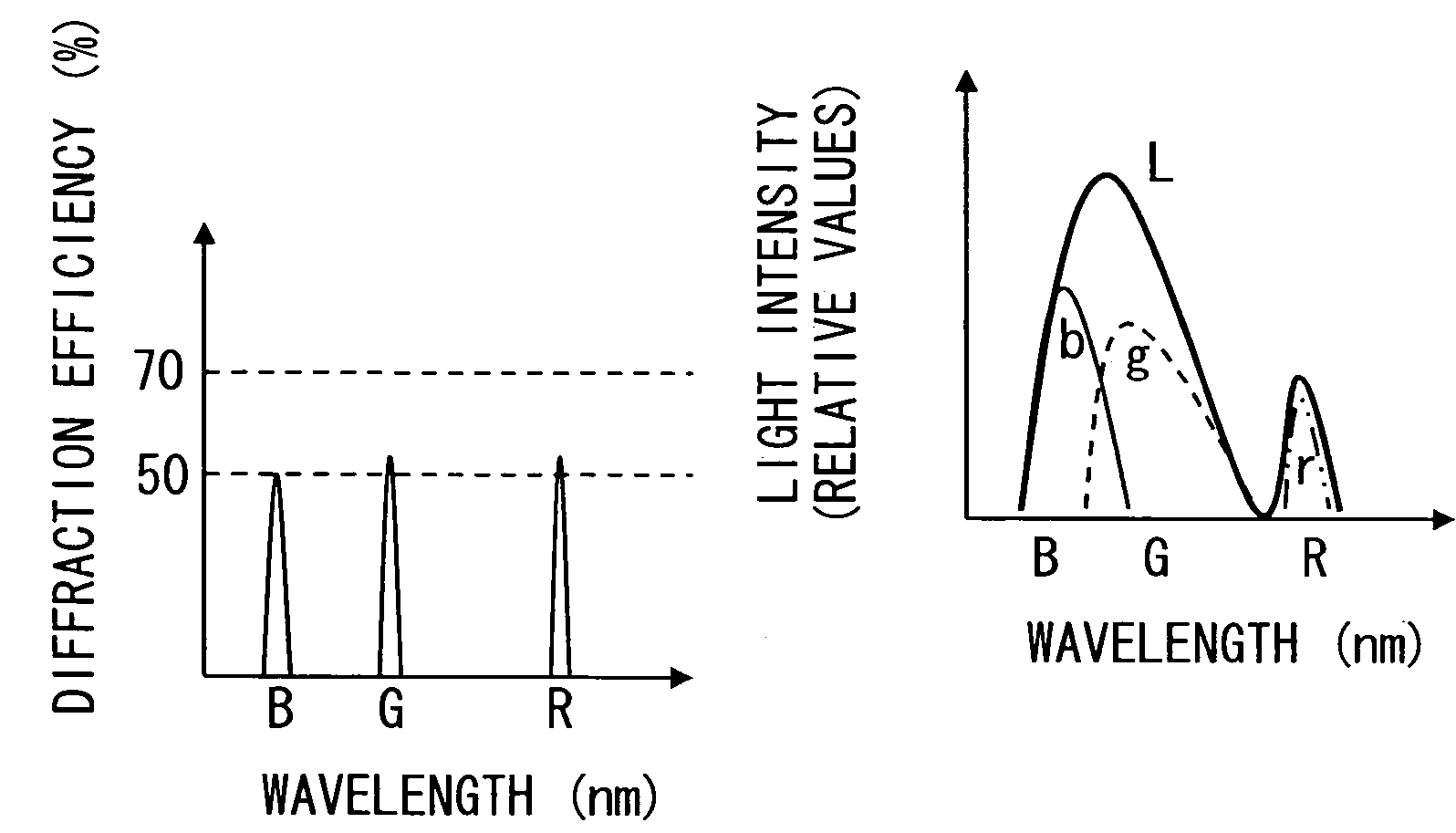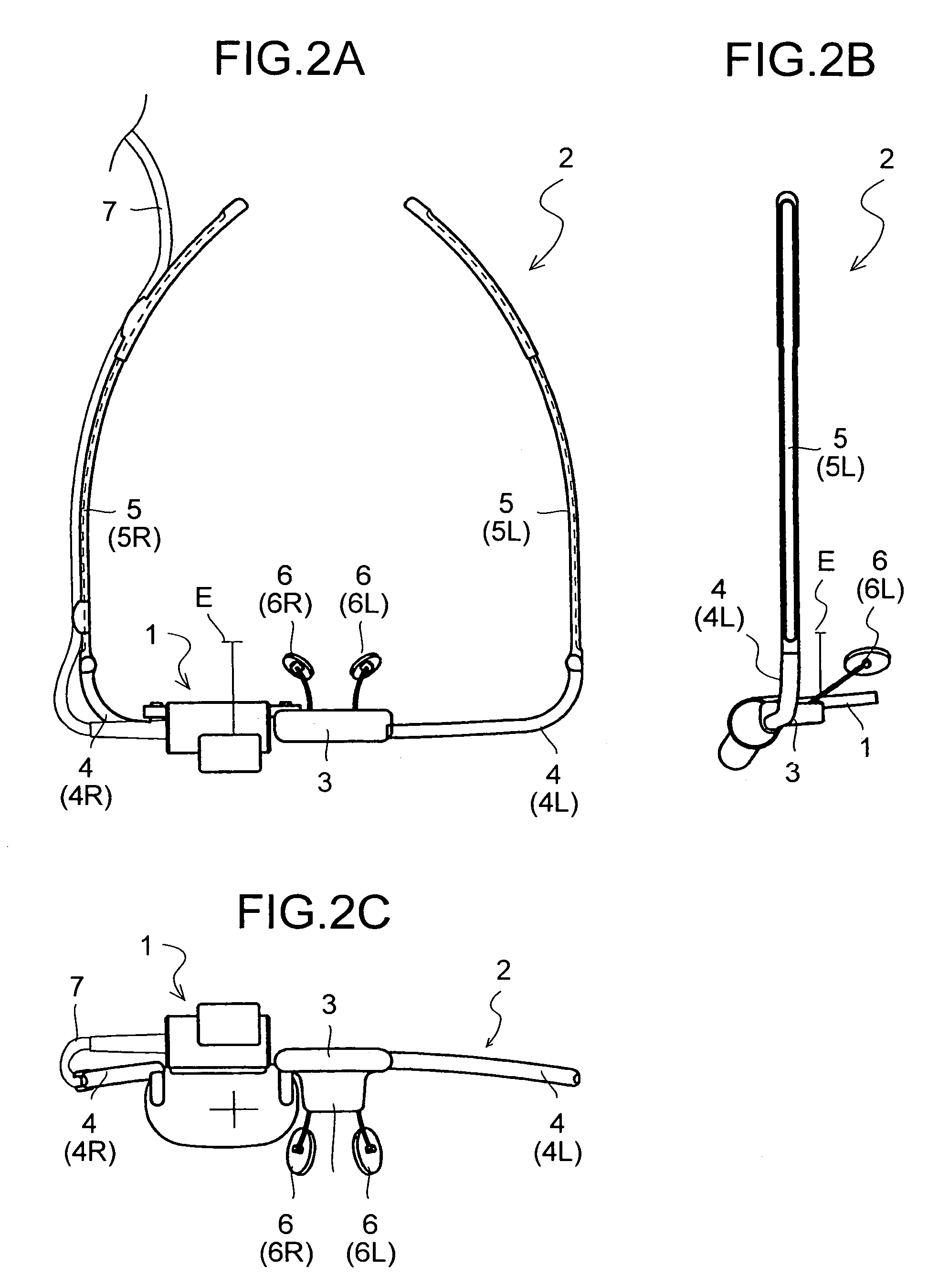Method for producing an optical device, optical device, image display apparatus, and head-mounted display
a technology of optical devices and head-mounted displays, applied in the direction of instruments, holographic processes, holographic nature/properties, etc., can solve problems such as inability to obtain, and achieve the effects of reducing power consumption, reducing current amounts, and reducing brightness
- Summary
- Abstract
- Description
- Claims
- Application Information
AI Technical Summary
Benefits of technology
Problems solved by technology
Method used
Image
Examples
Embodiment Construction
[0059]Hereinafter, an embodiment of the present invention will be described with reference to the drawings.
1. Head-Mounted Display
[0060]FIG. 2A is a plan view showing an outline of the structure of a head-mounted display (hereinafter abbreviated to “HMD”) embodying the invention, FIG. 2B is a side view of the same HMD, and FIG. 2C is a front view of the same HMD. The HMD includes an image display apparatus 1 and a supporter 2 that supports it, and has an appearance like that of common eyeglasses of which one of the lenses (for example, the left-eye lens) has been removed.
[0061]The image display apparatus 1 permits an observer to observe the outside-world image in a see-through fashion, and simultaneously displays an image to feed it, as a virtual image, to the observer. In the image display apparatus 1 shown in FIG. 2C, the part thereof that corresponds to the right-eye lens of eyeglasses is composed of two transparent base members 22 and 23 (see FIG. 4), which will be described lat...
PUM
 Login to View More
Login to View More Abstract
Description
Claims
Application Information
 Login to View More
Login to View More - R&D
- Intellectual Property
- Life Sciences
- Materials
- Tech Scout
- Unparalleled Data Quality
- Higher Quality Content
- 60% Fewer Hallucinations
Browse by: Latest US Patents, China's latest patents, Technical Efficacy Thesaurus, Application Domain, Technology Topic, Popular Technical Reports.
© 2025 PatSnap. All rights reserved.Legal|Privacy policy|Modern Slavery Act Transparency Statement|Sitemap|About US| Contact US: help@patsnap.com



